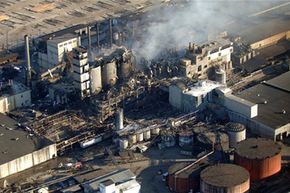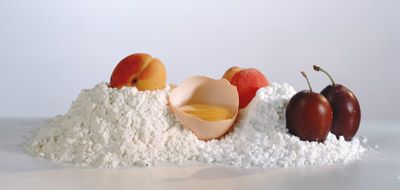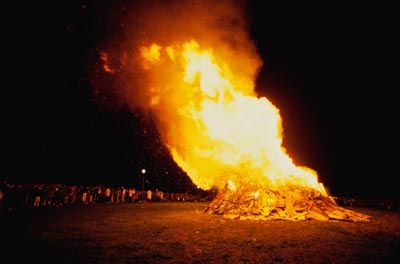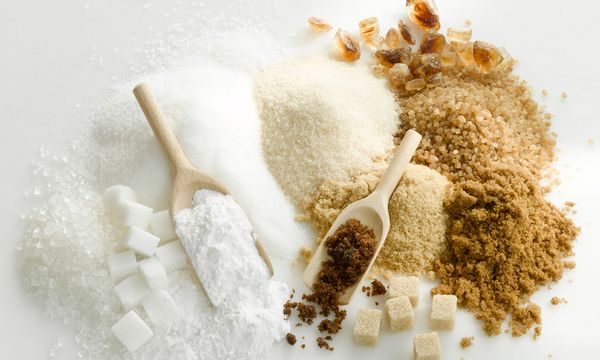Though you may not normally think about it, one of sugar's properties is that it is flammable. Anyone who's had a bad experience caramelizing a crème brûlée can attest to that. A flaming marshmallow is another good example of burning sugar. The thing is, marshmallows don't explode. If they did, the Campfire Girls would have to have something else for dessert after cookouts. So how can sugar explode?
As it turns out, there's nothing unusual about sugar that makes it flammable. In fact, prior to the Imperial Sugar refinery disaster, there were 281 volatile dust explosions in the United States between 1980 and 2005, costing 119 lives. These explosions were caused by dust from grains, wood and other materials [source: Chemical Safety Board].
"Any organic material can burn," says University of Arizona chemistry professor Dr. Steve Brown. But for an explosion to take place, especially in the case of volatile dusts like sugar, a few other factors must be involved.
Imagine you're in an enclosed room coated with a thick layer of sugar dust. You smack your hand down on a table top, disturbing some of the sugar dust and dispersing it into the air. If you are unwise enough to light a match, and you could see the ensuing explosion in slow motion, you'd notice that what appears to be a single, instantaneous burst is actually a series of chain reactions. The sugar dust particle ignited by your lit match ignites another particle and so on. The entire process is fueled by the oxygen in the room, and since the dust is suspended in the air, it interacts with the oxygen more easily than when it's settled on the table. This is also why marshmallows don't explode; the sugar inside the dense confection doesn't have much oxygen to interact with [source: CNN].
The force of the blast depends on the enclosed room. The chain reaction produced from the ignited sugar dust particles produces energy. This produces compression and expands the volume of the air. When this buildup occurs faster than the flame burns — as can be the case indoors — you have an explosion.
The first explosion is called the primary explosion, and the force created by a primary explosion can unsettle even more sugar dust, causing a secondary explosion. The two can happen in quick succession, and the second blast is often the more powerful: "It's kind of like, boom-KABOOM!" explains the Fire Department Safety Officers Association's Phil Choven.
Whether or not a room filled with sugar dust will explode also depends on a couple of other factors. The size of the sugar dust particles is important. The National Fire Protection Association has concluded that dust particles must be 420 microns across to be volatile. This sounds small, sure, but it's actually more than four times larger than the average grain of table salt. It also doesn't take much dust to pose a threat. The NFPA says only 1/32 of an inch of volatile dust covering just 5 percent of the surface area of a room "presents a significant explosion hazard" [source: Chemical Safety Board].
With so much sugar dust created by the refining process, it's hard to imagine the Imperial Sugar refinery tragedy wasn't caused by a dust explosion. Plus, Choven points out, a sugar refinery couldn't deal with volatile dust using the traditional method of humidifying rooms, since wet sugar would gum up the machinery.
For more information on explosions and other related topics, visit the links that follow.




